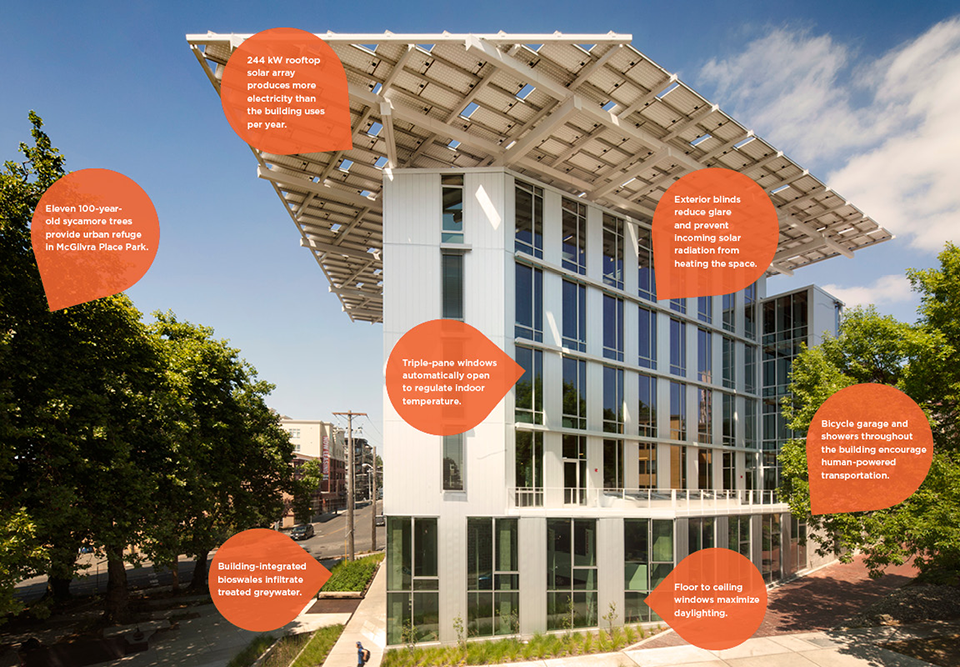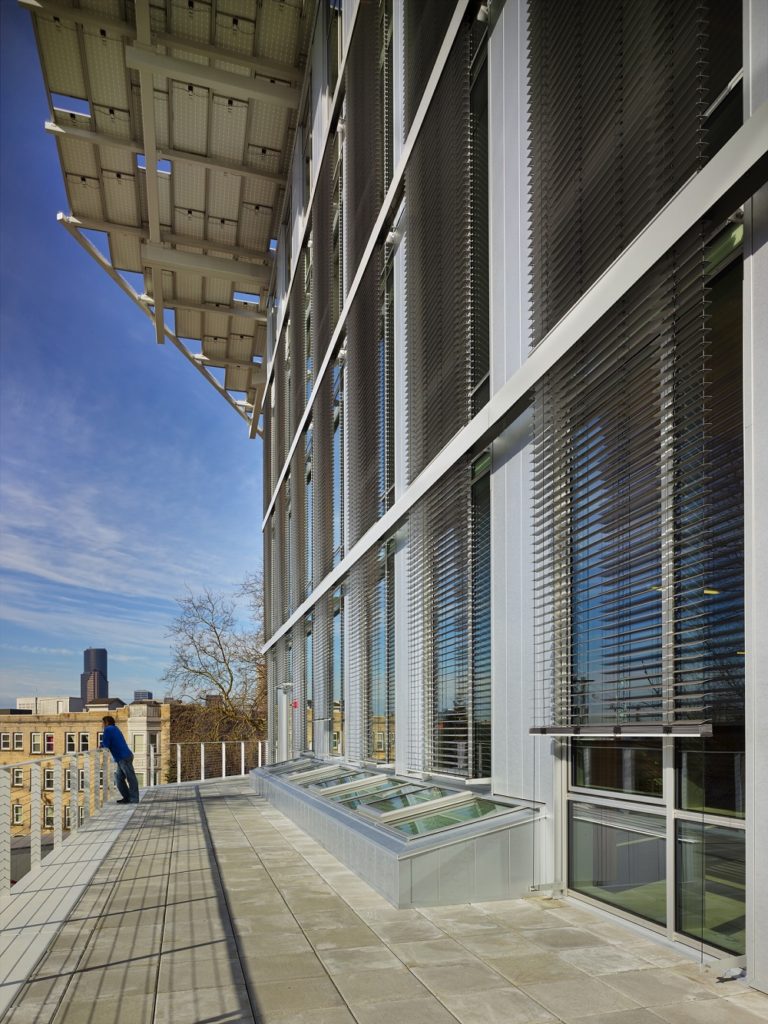The Greenest Commercial Building on Earth: The Bullitt Center
On Earth Day in 2013, the Bullitt Center was inaugurated in Seattle, Washington. This 6-story office building with 50,000 square feet also happens to be the greenest commercial building in the world.
Being green was not enough for the Bullitt Foundation. They wanted to reach the “Living Building” certification, the world’s most rigorous proven performance standard for ultra-green buildings. This challenging exercise requires that the structure produces as much energy as it uses, that it captures and treats rainwater, and that it meets the “Red List” compliant standards (banning more than 800 individual ingredients) for its materials and for the quality of its indoor environment. So far, only 21 buildings worldwide have been certified as “Living Buildings”.
In order to be certified, the list of requirements goes deeper into details with 20 specific imperatives within seven performance areas: Site, Water, Energy, Health, Materials, Equity and Beauty.
- Site: the location supports a pedestrian-, bicycle-, and transit-friendly lifestyle.
- Water: rainwater is collected on the roof, stored in an underground cistern and used throughout the building
- Energy: a solar array generates as much electricity as the building uses, if not more
- Health: the building promotes health for its occupants, with inviting stairways, operable windows and features to promote walking and resource sharing.
- Materials: the building does not contain “Red List” hazardous materials as explained, including PVC, cadmium, lead, mercury and hormone-mimicking substances, all of which are commonly found in building components.
- Equity: all workstations are within 30 feet of large operable windows, offering workers access to fresh air and natural daylight.
- Beauty: stunning architecture, an innovative photovoltaic array, a green roof and other native plantings, large structural timbers and a revitalized pocket park help beautify the surrounding neighborhood.
An important part of a Living Building is a living “skin”. In this case, triple-pane glazing windows are operable and provide a natural ventilation. On the outside, automated blinds by Warema maximize the daylight and minimize the glare on workstations. As a consequence, temperatures are kept under control allowing for comfortable conditions on the inside of the building.
The Bullitt Center is now almost completely occupied with tenants paying nothing for electricity. To be precise, the building generates 60% more electricity than it uses. It is also worth noting that the Bullitt Foundation, which has a $110 million endowment, spent $32.5 million to complete this project and are currently doing well from a financially point of view. As a result, the Foundation decided to disclose the building’s financials and lessons it learned in a new report, hoping to spur governments, universities and other institutions to aspire to meet the Living Building Challenge.
For further reading, find here the case study of another certified Living Building: the R.W. Kern Center.
Construction Progress
Together for a Brighter Future

